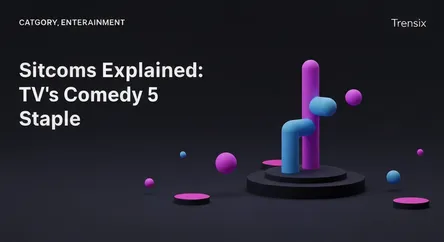Entertainment
Sitcoms Explained: TV's Comedy Staple

What is a sitcom? Discover the history and enduring appeal of situation comedies, from classic laugh tracks to their evolution in the streaming era.
What is it?
A sitcom, short for situation comedy, is a television genre centered on a recurring cast of characters in a familiar setting, such as a home or workplace. Each episode presents a self-contained, humorous story driven by everyday situations and character interactions. Key features often include witty dialogue, physical comedy, and, traditionally, a laugh track or a live studio audience to punctuate jokes. While multi-camera shows like Friends and Seinfeld defined an era, the genre has evolved to include single-camera formats like The Office and Modern Family, which omit the laugh track for a more naturalistic feel.
Why is it Trending?
Sitcoms consistently remain popular because they offer reliable comfort and escapism. Their formulaic, low-stakes plots and predictable humor make them easy to watch, especially on streaming platforms where entire series are available for binge-watching. Nostalgia fuels the trend, as classic sitcoms find new life with younger audiences. Furthermore, the format's adaptability allows it to tackle contemporary themes with a light touch, ensuring its relevance. In a complex world, the simple pleasure of a 22-minute episode that guarantees a laugh is more appealing than ever.
How does it Affect People?
Sitcoms have a powerful cultural impact by creating shared experiences and catchphrases that become part of the zeitgeist. They often shape our perceptions of family, friendship, and work, providing relatable characters who navigate universal life challenges. On a personal level, they serve as a potent form of stress relief, offering laughter and a temporary break from reality. Watching a beloved sitcom can evoke feelings of comfort and nostalgia, acting as a social bonding tool for families and friends who watch together.